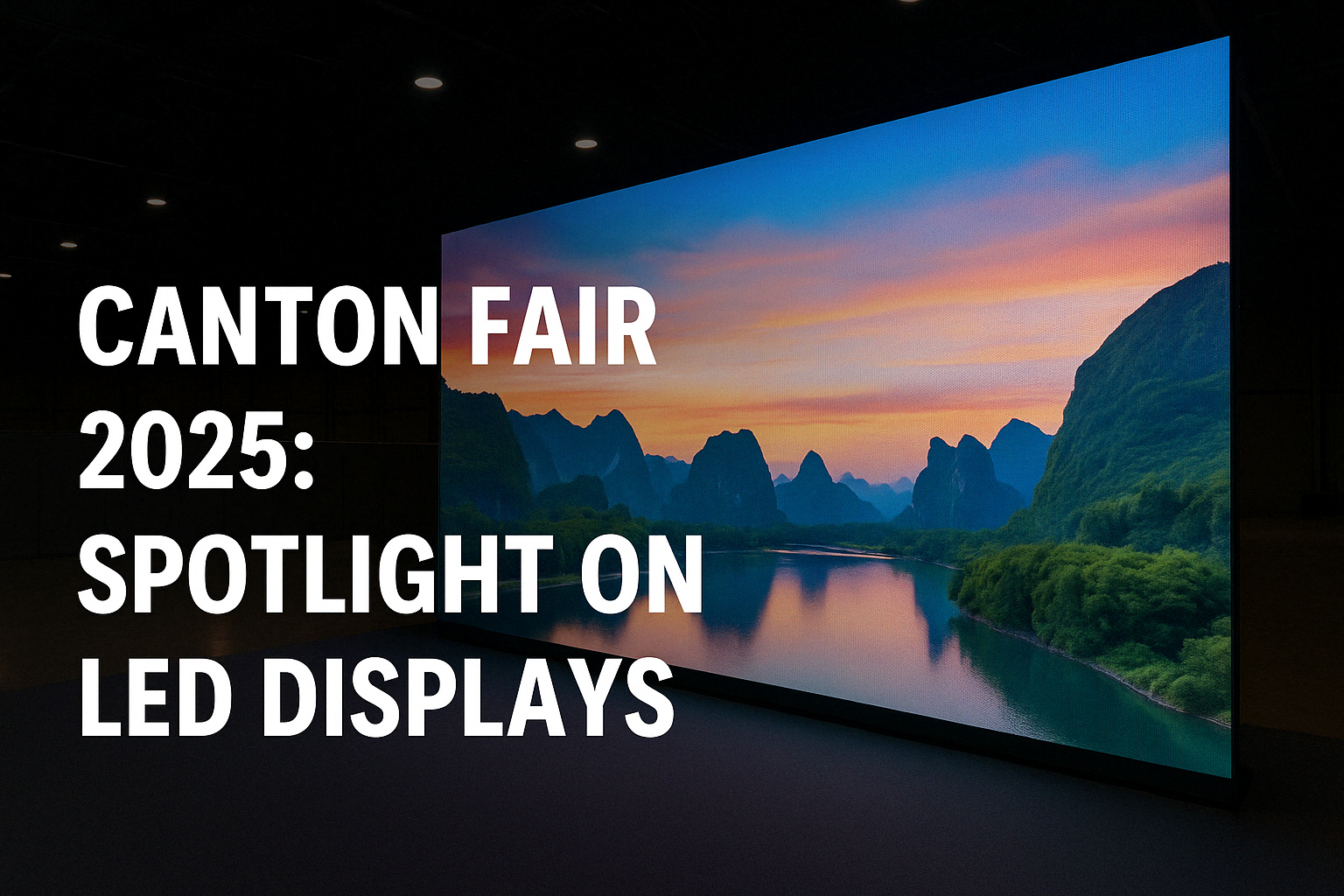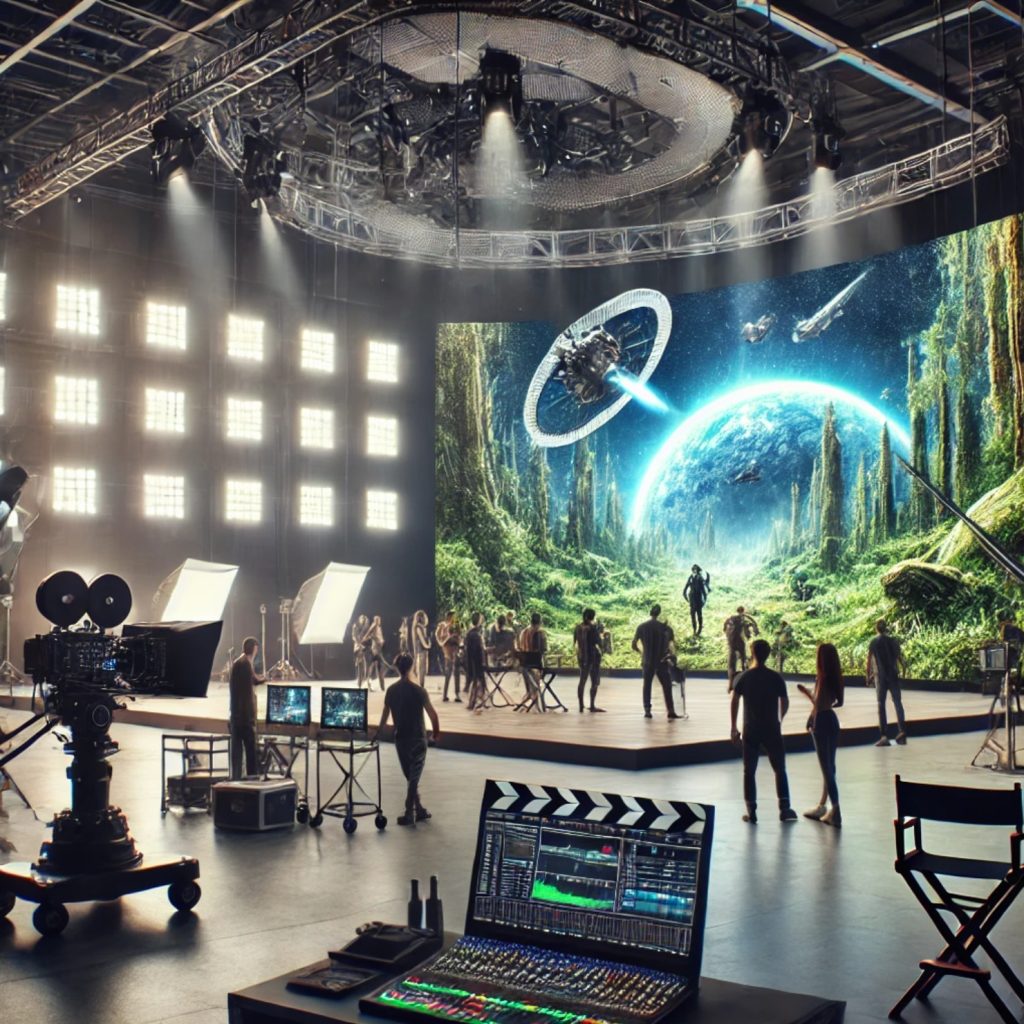-
Presentación de la serie LedCheer FP: Una sólida pantalla LED al aire libre creada para su rendimiento y confiabilidad
-

Serie flexible de alegría RS: La solución de visualización de alquiler LED flexible definitiva para cualquier evento
-

Feria de Cantón 2025 Avance: Tendencias de visualización LED que no puede perderse: ideas de LedCheer
2025-01-03

Introducción
The rapid advancement of display technology has led to the emergence of immersive LED display screens and Extended Reality (XR) displays. These cutting-edge solutions are reshaping industries ranging from entertainment and education to healthcare and retail. By combining ultra-high-resolution visuals with real-time interactivity, immersive LED and XR displays provide unparalleled experiences that captivate audiences and redefine how we perceive the digital world. This blog explores the technologies behind these displays, their applications, and their transformative impact across various sectors.
Understanding Immersive LED Display Screens
Immersive LED display screens are high-resolution panels designed to create engaging visual environments. These screens often feature small pixel pitches, enabling exceptional clarity even at close viewing distances. When arranged in large-scale configurations, they envelop viewers in a seamless visual experience, making them feel as if they are part of the scene.
Key Features of Immersive LED Displays:
- High Brightness and Contrast: Immersive LED screens deliver vivid visuals that remain clear even in well-lit environments.
- Seamless Design: Modular construction ensures that large displays appear seamless, enhancing the immersive experience.
- Flexible Configurations: These screens can be curved, departamento, or even three-dimensional, allowing for versatile installations.
- Durability and Longevity: LED technology ensures robust performance with minimal maintenance.
What is XR Display?
Extended Reality (XR) refers to the fusion of Virtual Reality (VR), Augmented Reality (Arkansas), and Mixed Reality (MR). XR display technology enhances the user experience by blending digital and physical worlds through advanced visuals, sensors, and interaction systems.
Components of XR Displays:
- Head-Mounted Displays (HMDs): Devices like VR headsets that provide users with an immersive, first-person view of virtual environments.
- Projection-Based Systems: Large XR installations use LED screens to project interactive content onto physical surfaces or rooms.
- Real-Time Tracking: Advanced sensors track user movements, enabling dynamic interactions with the virtual world.
Applications of Immersive LED Screens and XR Displays
1. Entertainment and Media
- Virtual Production: Immersive LED screens are revolutionizing filmmaking through virtual production techniques. Directors can use LED panels to create dynamic, photorealistic backgrounds in real-time, reducing the need for green screens.
- Gaming: XR displays offer gamers fully immersive environments where they can interact with virtual worlds using HMDs and motion controllers.
- Concerts and Events: LED walls and XR technologies create breathtaking stage designs, allowing audiences to feel like part of the performance.
2. Corporate and Retail
- Immersive Presentations: Corporate presentations can leverage XR displays to create engaging, interactive sessions that enhance understanding and retention.
- Retail Experiences: Stores use immersive LED walls to captivate customers with dynamic advertisements, virtual try-ons, or AR-assisted shopping.
3. Education and Training
- Simulated Training: XR displays provide safe, controlled environments for training in industries such as aviation, healthcare, and defense. Trainees can practice real-world scenarios with minimal risk.
- Interactive Learning: Immersive displays create engaging educational content, such as 3D visualizations of historical events or scientific phenomena.
4. Healthcare
- Surgical Simulations: XR displays assist surgeons in visualizing complex procedures before performing them in real life.
- Therapy and Rehabilitation: Immersive environments help patients with physical therapy, exposure therapy, or pain management.
5. Architecture and Real Estate
- Virtual Walkthroughs: XR displays allow architects and real estate agents to provide virtual walkthroughs of buildings, offering clients a realistic sense of space and design.
Advantages of Immersive LED Screens and XR Displays
- Enhanced Engagement: Immersive visuals and interactivity capture and maintain audience attention more effectively than traditional displays.
- Cost-Effective Solutions: Virtual production using LED screens reduces the need for expensive location shoots and post-production work.
- Flexibilidad: XR and immersive LED displays can adapt to various industries, making them versatile tools for communication and storytelling.
- Scalability: From small retail displays to massive concert stages, these technologies can scale to fit any application.
Challenges and Considerations
- High Initial Costs: While immersive LED screens and XR setups provide long-term value, their initial costs can be prohibitive for some organizations.
- Technical Expertise: Deploying and maintaining these systems require skilled professionals, which may pose a barrier for smaller businesses.
- Hardware Limitations: XR displays rely on precise tracking and rendering, which can strain hardware capabilities in certain applications.
- Content Development: Creating high-quality content that leverages these technologies to their fullest potential can be time-consuming and resource-intensive.
The Future of Immersive LED and XR Displays
As technology continues to evolve, immersive LED and XR displays are expected to become even more advanced and accessible. Emerging trends include:
- Improved Resolution and Pixel Density: Enabling even more realistic visuals.
- AI Integration: Allowing for adaptive, intelligent interactions in XR environments.
- 5G Connectivity: Enhancing real-time data transmission for seamless XR experiences.
- Sostenibilidad: Developing energy-efficient LEDs and recyclable materials for environmentally friendly designs.
These advancements will further expand the applications of immersive LED and XR displays, cementing their role in shaping the future of visual technology.
Conclusión
Immersive LED display screens and XR displays represent a paradigm shift in how we engage with digital content. Their ability to create lifelike, interactive environments opens up endless possibilities across industries. While challenges like cost and technical requirements remain, the benefits far outweigh the limitations. As adoption continues to grow, these technologies will undoubtedly play a central role in defining the next generation of visual experiences.




